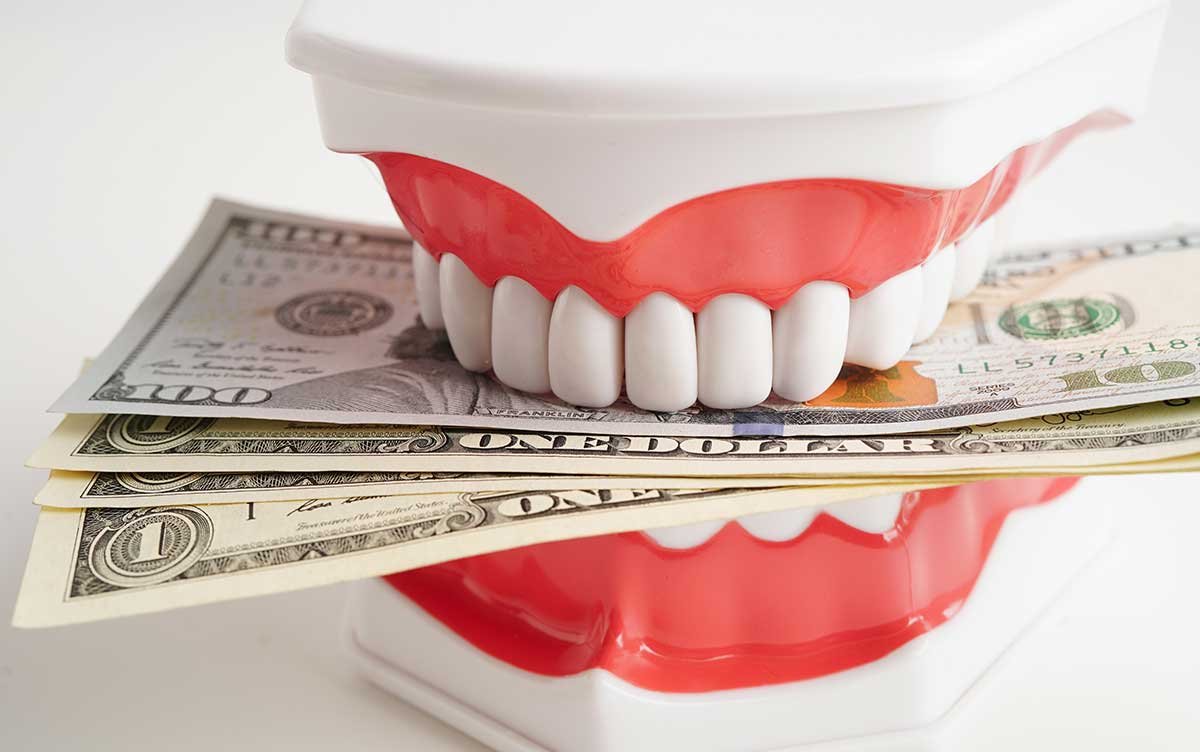Welcome to Dr. Implant Dentist’s blog! In today’s article, we will be discussing a common question: Is smile design permanent? Join us as we delve into the world of Dental Implants and explore the longevity of that picture-perfect smile you’ve always dreamt of. Stay tuned for answers and expert insights!
Is Smile Design with Dental Implants a Permanent Solution?
Smile Design with Dental Implants is indeed considered a permanent solution for restoring a beautiful smile. Dental implants are designed to be a long-term solution for missing or damaged teeth.
Dental implants are titanium posts that are surgically placed into the jawbone to serve as artificial tooth roots. They provide a stable foundation for dental restorations such as crowns, bridges, or even full arches of dentures.
Once the dental implant is securely fused with the jawbone through a process called osseointegration, it becomes a permanent part of the mouth’s structure. This not only ensures stability and functionality but also allows for natural-looking aesthetics.
Smile design involves planning and customizing the overall appearance of the teeth to achieve a harmonious and balanced smile. Dental implants play a crucial role in smile design as they can replace missing teeth in a way that seamlessly integrates with the surrounding natural teeth.
Unlike traditional removable dentures or bridges, dental implants offer a more permanent solution. They do not rely on neighboring teeth for support, which helps prevent further damage to healthy teeth. With proper care and maintenance, dental implants can last a lifetime.
In conclusion, smile design with dental implants is considered a permanent solution due to the stability, functionality, and natural-looking results they provide.
What is the duration of smile designing?
The duration of smile designing with dental implants can vary depending on several factors:
1. Initial assessment and treatment planning: This involves a thorough examination of your oral health, including X-rays and diagnostic tests. It may take one or two appointments to complete this stage.
2. Implant placement: The process of placing dental implants entails surgically inserting them into the jawbone. This procedure typically requires one to two appointments, depending on the number of implants needed.
3. Healing period: After implant placement, a healing period of about 2 to 6 months is necessary. During this time, the implants fuse with the jawbone through a process called osseointegration, creating a stable foundation for the final restorations.
4. Prosthesis fabrication: Once the implants have successfully integrated, impressions are taken to create custom-made dental restorations, such as crowns or bridges. The fabrication process usually takes a few weeks, during which temporary restorations may be provided.
5. Final placement and adjustments: Once the permanent restorations are ready, they are attached to the implants. The dentist will ensure proper fit, function, and esthetics. Adjustments may be required to achieve the desired outcome.
The entire smile design process with dental implants can typically range from 4 to 9 months but can vary depending on individual cases. It is important to note that each patient’s treatment plan may differ, and multiple visits to the dentist may be necessary throughout the entire process to ensure optimal results and long-term success.
What are the drawbacks of smile design?
Smile design in the context of dental implants has several potential drawbacks that patients should be aware of.
1. **Time-consuming process**: The smile design process can be lengthy, involving multiple consultations, assessments, and treatment planning. It requires the collaboration between the dentist, prosthodontist, and dental laboratory technicians to ensure optimal results. This can extend the overall treatment timeline.
2. **Cost**: Smile design with dental implants can be expensive. The cost includes diagnostic tests, implant surgery, prosthetic components, and follow-up care. Additionally, if any complications or revisions arise during the process, it may further increase the overall cost.
3. **Complexity**: Dental implant procedures, including smile design, require advanced surgical techniques and expertise. A multidisciplinary approach is often necessary, involving specialists in periodontics, oral surgery, and prosthodontics. Any mistake or improper planning can lead to functional or aesthetic issues.
4. **Risk of complications**: While dental implant success rates are generally high, there are potential risks and complications associated with the procedure. These may include infection, nerve damage, implant failure, or bone loss. Patients should carefully evaluate the potential risks and discuss them with their dentist before proceeding.
5. **Maintenance and oral care**: Dental implants require proper maintenance and regular oral care to ensure their longevity. This involves regular check-ups, professional cleanings, and practicing good oral hygiene at home. Failure to maintain proper oral care can lead to complications and affect the success of the smile design.
Despite these drawbacks, it’s important to note that smile design with dental implants provides numerous benefits, such as improved aesthetics, restored functionality, and enhanced self-confidence. Patients should consult with their dentist to understand their individual risks, benefits, and alternatives before deciding on smile design with dental implants.
Is digital smile design a permanent solution?
Digital Smile Design is not a permanent solution in itself, but rather a preliminary step in the process of planning and designing a smile makeover using dental implants.
Digital Smile Design involves the use of advanced software and imaging technology to create a digital representation of the desired final result. It allows dentists and patients to visualize and communicate about the proposed changes to the smile.
Once the digital design is completed, it serves as a guide for the actual placement of dental implants. The digital design ensures that the implants are positioned correctly to achieve the desired aesthetic outcome. It also helps in determining the size, shape, and color of the prosthetic teeth that will be attached to the implants.
However, the success and longevity of dental implants depend on various factors, such as the patient’s oral hygiene habits, bone health, overall health, and regular dental check-ups. Therefore, while the digital smile design plays a crucial role in the treatment planning phase, it is important to understand that the actual implants and prosthetic teeth are the components that offer a long-term solution.
In conclusion, digital smile design is a valuable tool in the process of planning and designing a smile makeover using dental implants. It helps in visualizing the desired outcome and ensuring proper implant placement. However, it is essential to maintain good oral hygiene and follow the dentist’s instructions for a successful and long-lasting outcome with dental implants.
What is the cost of a smile design makeover?
The cost of a smile design makeover with dental implants can vary depending on several factors. These factors include the number of implants needed, the complexity of the case, the materials used, and the location of the dental practice.
On average, the cost of a single dental implant ranges from $1,500 to $6,000. However, keep in mind that this does not include any additional procedures that may be necessary, such as bone grafting or sinus lifts, which can increase the overall cost.
In addition to the implant itself, there are other expenses to consider. These include the cost of an initial consultation, diagnostic tests (such as x-rays and 3D scans), the surgical procedure, the abutment (the connector between the implant and the crown), and the final restoration (such as a dental crown or bridge).
In some cases, dental insurance may cover a portion of the cost of dental implants. It is important to check with your insurance provider to determine what is covered under your plan.
To get an accurate estimate of the cost for your specific situation, it is best to schedule a consultation with a qualified dentist or oral surgeon. They will evaluate your dental condition, discuss your goals, and provide you with a personalized treatment plan and cost estimate.
Remember, while the cost of a smile design makeover with dental implants may seem high, it is important to consider the long-term benefits. Dental implants are a permanent solution for missing teeth and can improve your oral health, appearance, and self-confidence.
Frequent Questions
Are the results of smile design with dental implants permanent?
Yes, the results of smile design with dental implants can be considered permanent. Dental implants are designed to replace missing teeth and restore both function and aesthetics to the smile. The implants themselves are made of biocompatible materials such as titanium, which integrate with the jawbone and provide a stable foundation for the prosthetic tooth or teeth.
Once the dental implants are successfully placed and integrated, they become a permanent part of the patient’s mouth. The prosthetic teeth attached to the implants are custom-made to match the patient’s natural teeth in terms of color, size, and shape, ensuring a seamless and natural-looking smile.
However, it is important to note that the longevity of dental implants depends on proper oral hygiene maintenance and regular dental check-ups. Good oral hygiene practices, such as brushing and flossing regularly, along with routine dental visits, can help ensure the longevity of the prosthetic teeth and implants.
In rare cases, complications such as implant failure or peri-implantitis (inflammation of the tissues surrounding the implant) may occur. These issues can potentially compromise the longevity of the implants. However, with proper care and regular dental visits, the results of smile design with dental implants can typically last for many years, if not a lifetime.
How long can I expect my smile design with dental implants to last?
How long can I expect my smile design with dental implants to last?
The longevity of your smile design with dental implants depends on various factors, including your oral hygiene routine, lifestyle habits, and the quality of the dental implants themselves. On average, dental implants have a success rate of over 95% and can last for decades or even a lifetime with proper care.
It’s essential to maintain good oral hygiene by brushing twice a day, flossing daily, and visiting your dentist regularly for check-ups and cleanings. Implants do not decay like natural teeth, but they can develop gum disease or peri-implantitis if not properly cared for. Regular dental visits will allow your dentist to monitor the health of your implants and address any issues early on.
Avoid habits that can put excessive stress on your implants, such as biting down on hard objects like ice or using your teeth as tools. Additionally, smoking and excessive alcohol consumption can increase the risk of implant failure and should be avoided.
The durability of your smile design also depends on the materials used for the implant restoration, such as the dental crown or bridge. High-quality materials like porcelain or zirconia can provide excellent strength and aesthetics, contributing to the long-term success of your smile design.
Overall, with proper care and maintenance, dental implants can offer a long-lasting solution for restoring your smile and improving your oral health. It’s important to consult with a qualified dental professional who can assess your specific case and provide personalized guidance for maintaining your dental implants for years to come.
What factors can affect the longevity of a smile design achieved with dental implants?
Several factors can affect the longevity of a smile design achieved with dental implants. These include:
1. **Oral hygiene**: Maintaining good oral hygiene is crucial for the long-term success of dental implants. Poor oral hygiene can lead to gum disease, which can compromise the stability of the implants and result in implant failure.
2. **Bone quality and quantity**: The success of dental implants is dependent on the quality and quantity of the jawbone. Sufficient bone volume and density are necessary to provide a strong foundation for the implants. In cases where the bone is inadequate, bone grafting or other augmentation procedures may be required to improve implant success.
3. **Bruxism**: Teeth grinding or clenching, known as bruxism, can exert excessive force on dental implants, leading to implant failure. Patients with bruxism may need to wear a night guard or seek treatment to prevent damage to the implants.
4. **Smoking**: Smoking is associated with an increased risk of implant failure. Tobacco use can impair the healing process and reduce blood flow to the gums, compromising the stability of the implants. Quitting smoking is recommended to promote the long-term success of dental implants.
5. **Systemic health conditions**: Certain systemic health conditions, such as diabetes or immune disorders, can affect the healing process and increase the risk of implant failure. It is important for patients to manage their overall health to optimize the success of dental implants.
6. **Proper implant placement and restoration**: The skill and expertise of the dental professional performing the implant placement and restoration are critical factors for the long-term success of dental implants. Proper placement and alignment of the implants, as well as the quality of the restorations, are essential for achieving a durable and aesthetically pleasing smile design.
7. **Regular dental check-ups**: Regular dental visits are important for monitoring the condition of dental implants and identifying any issues early on. Routine professional cleanings and examinations can help maintain the longevity of the smile design achieved with dental implants.
In summary, maintaining good oral hygiene, addressing bruxism, quitting smoking, managing systemic health conditions, ensuring proper implant placement and restoration, and attending regular dental check-ups are all crucial factors that can affect the longevity of a smile design achieved with dental implants.
In conclusion, smile design achieved through dental implants is indeed a permanent solution. Unlike temporary cosmetic procedures, dental implants are a long-lasting investment in restoring both the functionality and aesthetic appeal of a smile. With proper care and oral hygiene maintenance, dental implants can provide a lifetime of confident smiles. So, if you’re considering smile design options, remember that dental implants offer a durable and sustainable solution that can truly transform your smile permanently.



